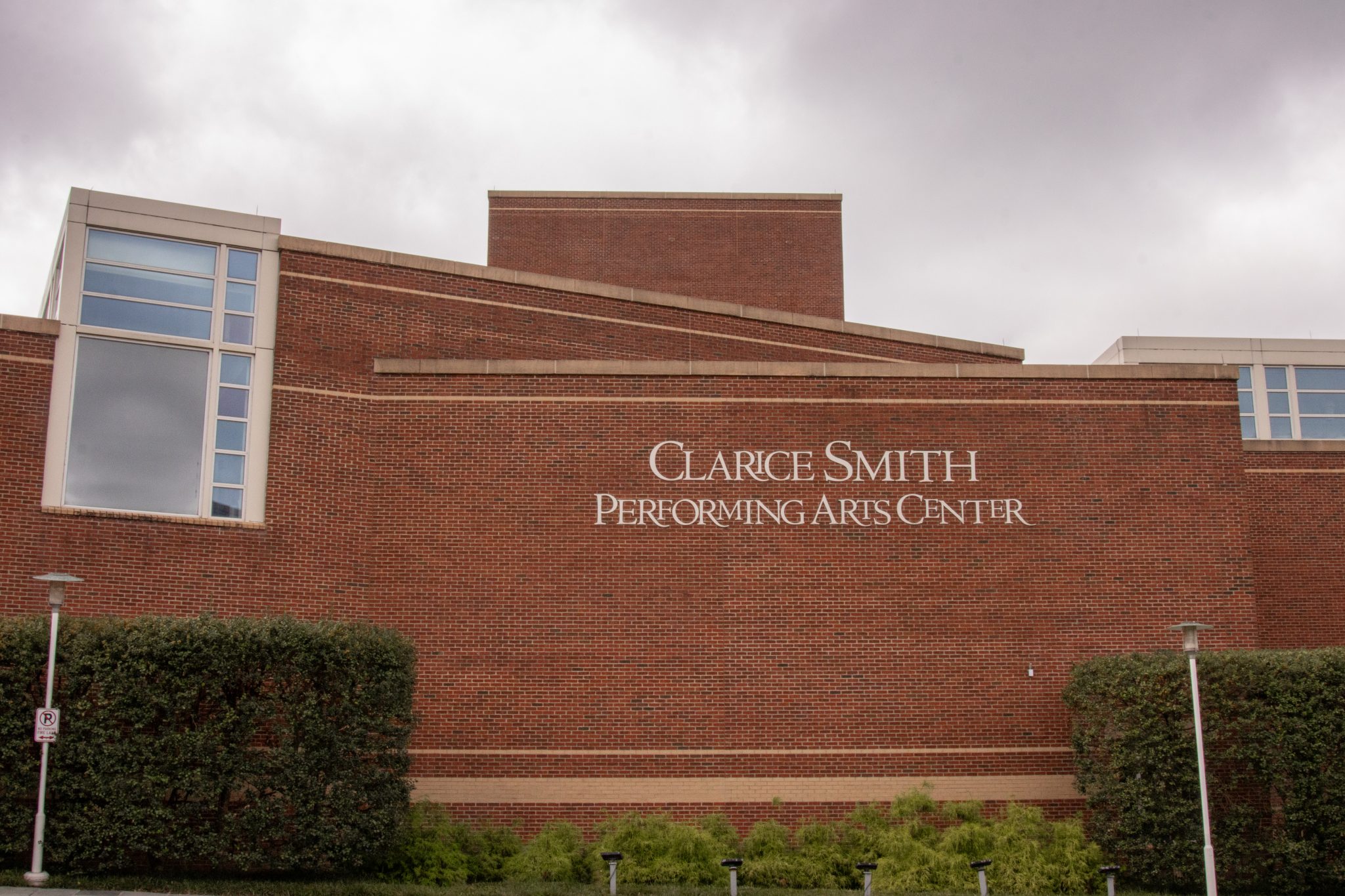The Clarice Smith Performing Arts Center featured a joint performance of the University of Maryland Wind and Symphony Orchestras Friday night, featuring musical performances from both orchestras across four varying acts.
The pieces Passacaglia and Fugue in C Minor and Enigma were conducted by bands director Michael Votta Jr., and Rain on It and Ma Mère l’Oye (“Mother Goose”) Suite were conducted by orchestras director David Neely.
The wind orchestra began their set with Passacaglia and Fugue in C Minor by J.S. Bach, a piece dominated by the organ. Beginning slowly, the haunting melody rises dramatically, before capturing the audience in its awe and darkness.
The piece used continued non-chord tones to create a vivid dialogue between various instruments, the performance striking in its unpredictability.
Arushi Srinivasan, a junior computer science and math major, praised the Wind Orchestra’s performances.
[‘Pretty girl humor’ trend is another excuse to bully people online]
“What struck out to me a lot about the Passacaglia were the question-answer phrases between the different parts of the orchestra,” Srinivasan said. “[There is] a very beautiful pattern that was established by Bach fugues, and I thought they did a really wonderful job articulating that.”
David Biedenbender’s Enigma similarly began with a soft, whimsical tone before surprising the audience with transitions into an intense melody comparable to a score out of Harry Potter.
Enigma, meaning riddle in Greek, signifies the piece’s dramatic progression as the supposed theme of the piece is revealed gradually through instrumental development.
Junior sociology major Genevieve Reineke said she liked the second piece’s organ accompaniment and highlighted Votta’s conducting.
“I really enjoyed seeing [Votta’s] movements and how that translated into the playing of the piece,” Reineke said.
Following the intermission, the performance switched to the Symphony Orchestra.
Rain on It by Kristin Kuster is a contemporary piece exploring feelings about the passage of time. In the event’s program, Kuster describes her resonation with rain, having often watched storms with her dad growing up in Boulder, Colorado. She wrote that rain feels like a “transition-time.”
In the piece, the dwelling and enraptured emotions that represent rain are drawn out through sequences of intense instrumentals. With fast-paced notes and rhythm, the piece takes the audience through a whirlwind of emotions until its sudden stop.
Evangeline Chen, a freshman biochemistry and music performance major, said they were surprised with Kuster’s piece.
“I’m not a big fan of contemporary pieces, but this one was actually really good,” Chen said. “I could get the feeling that the composer was talking about, the feeling of raining.”
Next was Maurice Ravel’s Ma Mère l’Oye (“Mother Goose”) Suite, a five movement piece that tells a different story each movement, including “Pavane of Sleeping Beauty” and “Conversations of Beauty and the Beast.” The piece, meant to evoke feelings of nostalgia, was refined in composition, making each movement slow and steady yet meaningful in its story.
The first movement, “Pavane de la Belle au Bois Dormant,” or “Pavane of Sleeping Beauty,” suspends time with the repetition of simple and quaint notes meant to awaken the princess.
[Guillermo del Toro gives new life to ‘Frankenstein’ in latest adaptation]
Every movement explores its stories through subtle and particular instrumental combinations, specifically “Le Jardin Féerique” or “The Fairy Garden.” With its celestial chimes, the orchestra proceeded into triumphant notes and bells that left a quiet but powerful impact on the audience with its childlike reminiscence.
Chen, who plays the viola, says the piece resonated with them because of past experiences playing the suite.
“It was definitely nostalgic hearing all of this again,” Chen said. “It was very mystical.”



